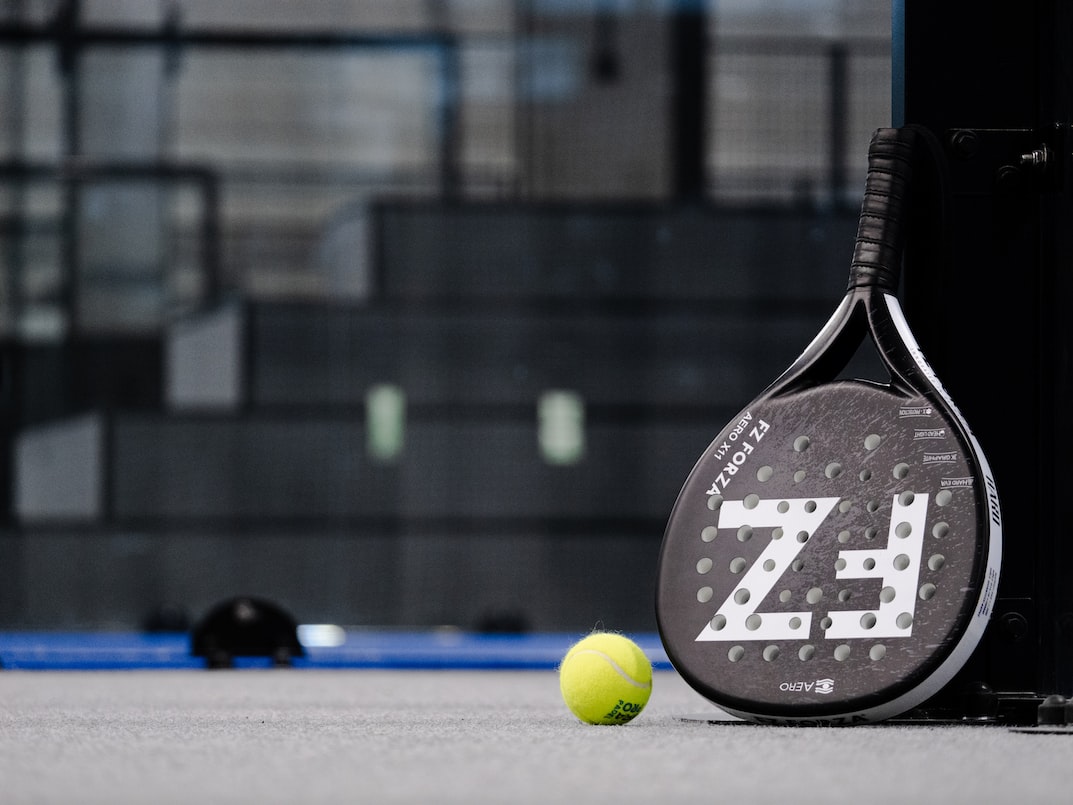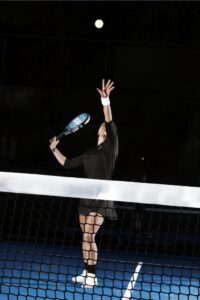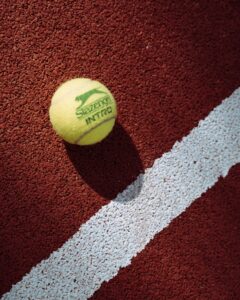From A to Z: A Comprehensive Overview of Padel Fundamentals
8 min read
From A to Z: A Comprehensive Overview of Padel Fundamentals
Welcome to the wonderful world of padel! Whether you’re a seasoned player or just starting out, understanding the fundamentals of this exciting sport is key to improving your game. In this article, we’ll take you from A to Z, covering all the essential aspects of padel that every player should know. So grab your racket, let’s start!
A is for Ace
An Ace is a serve that lands in the opponent’s court and is untouched. As a padel player, mastering the serve is critical to winning matches. One of the most effective ways to serve is to hit the ball over the net and landing it in the service box. This type of serve is challenging for your opponent to return and can help you win points consistently.
B is for Backhand
The backhand is an essential shot in padel. To hit a proper backhand shot, you need to stand perpendicular to the net, and your shoulders should be parallel to the back wall. Place your non-dominant hand on the grip, and your dominant hand about two-thirds of the way up the handle. As you swing, make sure to keep your eye on the ball and strike it with a smooth and controlled motion.
C is for Court
The court is the playing area where the game is played. A padel court is smaller than a tennis court and enclosed by walls made of glass or concrete. The court is rectangular, with a net set up in the middle that divides the court into two halves. As a player, it’s important to familiarize yourself with the court’s dimensions and boundaries to be able to execute the proper shots and strokes.
D is for Drive
A drive is a groundstroke shot that travels in a straight line and usually stays low over the net. A drive is a powerful and accurate shot, and it can help you win points by setting up more chances to hit winning volleys or smashes. It’s essential to use proper footwork to generate power and accuracy when hitting a drive shot.
E is for Eye on the Ball
One of the most important things to remember in padel is keeping your eye on the ball. You should watch the ball throughout the entire point and follow its movement during every shot. This will help you anticipate where the ball is going and make quick decisions on where to position yourself on the court.
F is for Footwork
Footwork is an essential aspect of any padel player’s game. It’s crucial to have good footwork to be able to respond quickly to your opponent’s shots and move around the court quickly. Try to stay light on your feet and be ready to shift your weight from one foot to the other quickly. This will help you move faster and more efficiently on the court.
G is for Grip
The grip is how you hold the racket in your hand. Different grips can be used for different shots, and it’s essential to be familiar with them to be a competent padel player. The most common grips used in padel include the Continental Grip and the Eastern Grip. Experiment with different grips to find what works best for you.
H is for Half-Volley
A half-volley is a tricky shot that requires a lot of skill and technique. It’s a shot that is hit immediately after the ball has bounced, but before it has bounced twice. To hit a successful half-volley, your racket must be perfectly positioned to strike the ball cleanly, and you must keep your body balanced and in control.
I is for In
In padel, a ball that lands inside the court’s boundaries is considered “in.” However, it’s important to remember that a ball that touches any part of the line is also considered in. As a player, it’s essential to be able to judge whether a ball is in or out to make the right calls and avoid any arguments with your opponent.
J is for Jump
Jumping is not commonly used in padel, but it can come in handy for certain shots. For example, if you’re returning a high serve, jumping can help you get closer to the ball and hit it with more power. However, jumping can be risky and should only be used when absolutely necessary.
K is for Kitchen
The kitchen is the part of the court that is closest to the net. In padel, the kitchen is a no-volley zone, which means that you cannot hit the ball before it bounces inside the kitchen. This is an important rule to remember, as it can affect how you approach certain shots.
L is for Lob
A lob is a shot that is hit high over the net and deep into your opponent’s court. A lob can be a useful shot to use when your opponent is up at the net, as it can force them to retreat and give you more time to get back into position. However, a well-executed lob requires a lot of control and technique to hit accurately.
M is for Match Point
Match point is the point that a player needs to win to end the match. In padel, a match is usually played best-of-three sets, and the team that wins two sets first wins the match. Understanding the importance of match point and maintaining your focus and composure can help you close out games and secure wins.
N is for Net
The net is the barrier that separates the two halves of the court. In padel, the net is slightly lower than in tennis, and it is essential to be able to hit accurate shots over the net to win points. Be sure to practice your net play and groundstrokes to ensure you can cross the net with ease.
O is for Overhead Shot
The overhead shot is a powerful shot that is hit overhead and down towards your opponent’s court. It’s a highly effective shot, especially when your opponent is standing close to the net. To hit a proper overhead shot, you need to position yourself correctly, be aware of your timing, and have good coordination between your eyes, hands and body.
P is for Paddle
The Paddle is the most important equipment used in padel. Paddles are similar to tennis rackets but are smaller and have a perforated surface to help gripping. As a player, ensure that you select a paddle that suits your playing style and preferences. It’s an essential investment that can affect your game positively.
Q is for Quick Reaction Time
Quick reaction time is an essential skill to have in padel. You need to be able to respond quickly to your opponent’s shots and move around the court with efficiency. Practice drills that can improve your reflexes and agility, and be sure to stay alert and focused throughout the game.
R is for Rally
A rally is a sequence of shots that occurs between two opposing players or teams. A long rally can be both physically and mentally challenging, and it’s essential to have the stamina and endurance to withstand them. Work on improving your fitness level and build up your endurance to last longer in rallies.
S is for Serve and Return
The serve and return are the two most critical shots in padel. A good serve can set up a winning point, while a good return can force your opponent to play defensively. Work on practicing your serves and returns to improve your game and increase your chances of winning rallies.
T is for Topspin
Topspin is a shot that creates a rotation that causes the ball to spin forward in the air, giving it more speed and bounce off the bounce. Topspin is a highly effective shot, especially for groundstrokes, and it can also help you control your opponent’s return. However, it requires a lot of practice and technique to hit properly.
U is for Underhand Serve
The underhand serve is a less common serve used in padel that can be a highly effective shot. The underhand serve is easier to control than the overhand serve, and it can catch your opponent off guard. However, the underhand serve is slower than the overhand serve, so it’s best to use it sparingly.
V is for Volley
In padel, a volley is a shot that is hit in the air before the ball bounces. Volleying is an essential skill, as it allows you to return high shots or shots that are close to the net quickly. Good volleying technique requires quick reflexes, good footwork and a controlled and accurate striking motion.
W is for Winning Shot
The winning shot is the shot that lands just outside of your opponent’s reach and wins you the point. There are many different types of winning shots that you can use, such as smash shots, drop shots, or lob shots. Work on improving your technique and staying focused to be able to execute winning shots consistently.
X is for Cross Court Shot
A cross-court shot is a shot that is hit diagonally across the court. Cross-court shots can be highly effective, as they can catch your opponent out of position and open up the court for you to hit winning shots. However, cross-court shots require good control and accuracy to execute correctly.
Y is for Yield
To succeed in padel, it’s essential to learn when to yield and when to go for the win. Knowing when to play offensively and when to play defensively is critical to winning matches. Yielding can involve returning the ball in a way that avoids giving your opponent the chance to leave you exposed and vulnerable.
Z is for Zone
The zone is a mental and physical state where everything feels effortless, and you play at your best level. Achieving the zone requires practice, experience and a calm, focused mind. When you’re in the zone, you feel confident, alert and in control, and you’re more likely to make winning shots and create opportunities to win matches.
Conclusion
There you have it, from A to Z, our comprehensive overview of padel fundamentals. We hope this article has been helpful in improving your understanding of this exciting sport. Remember, practice is key to mastering padel, so get out there, and hit the court!






